In the ever-evolving landscape of project management methodologies, Kanban has emerged as a powerful and flexible tool, providing teams with a visual framework to manage work efficiently. At the heart of Kanban is the concept of "flow," a continuous and smooth progression of work from ideation to delivery. In this article, we will explore the principles of Kanban flow and how it contributes to improved productivity and collaboration within teams.
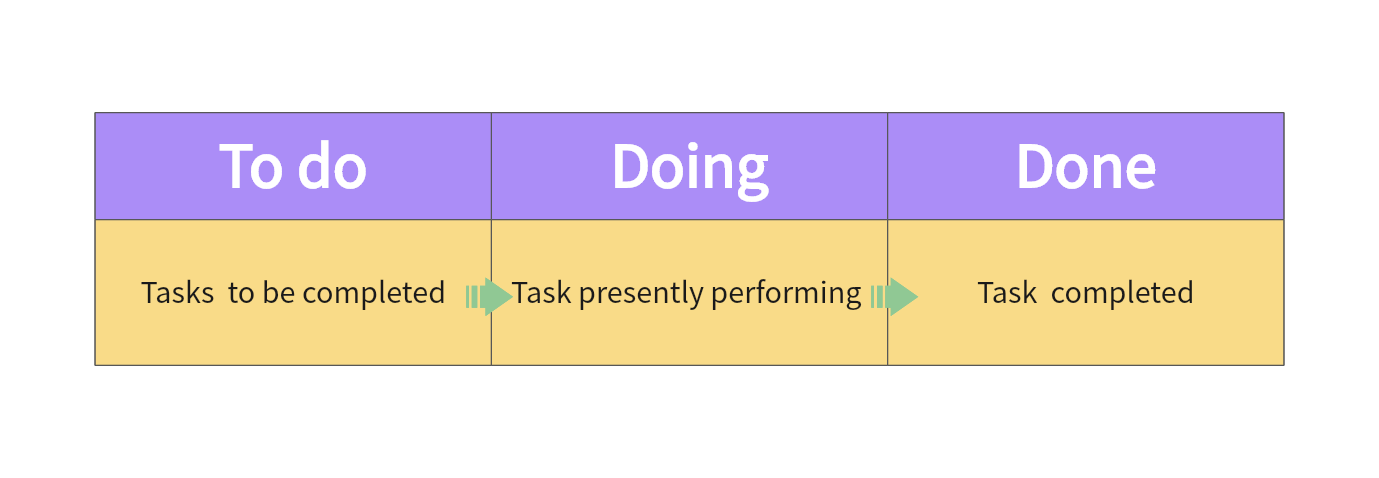
Part 1. The Basics of Kanban
Kanban originated from the Toyota Production System in Japan and was later adapted for knowledge work and project management. Unlike traditional project management approaches that rely on strict planning and fixed timelines, Kanban embraces a more adaptive and responsive model.
At its core, Kanban visualizes work on a board, dividing it into different stages or columns representing the workflow. Typically, these columns include stages like "To Do," "In Progress," and "Done." Each work item, represented by a card, moves through these stages, providing a real-time visual representation of the work's status.
Part 2. The Principles of Kanban Flow
The principles of Kanban flow revolve around creating a visual, efficient, and adaptive system for managing work. Here are the key principles:
1. Visualizing Work
The first step in implementing Kanban is to visualize all work items on a Kanban board. This transparency enables teams to understand the current state of tasks, identify bottlenecks, and make informed decisions.
2. Limiting Work in Progress (WIP
One of the key principles of Kanban flow is limiting the number of tasks a team can work on simultaneously. This restriction prevents overloading team members and helps maintain a steady and manageable flow of work through the system.
3. Managing Flow
Kanban emphasizes the importance of a smooth and continuous flow of work. By identifying and addressing impediments promptly, teams can optimize their processes and maintain a consistent pace of delivery.
4. Making Policies Explicit
Kanban encourages teams to define explicit policies for each workflow stage. These policies provide clarity on how work items move through the system, reducing ambiguity and streamlining decision-making processes.
5. Continuous Improvement
The Kanban approach promotes a culture of continuous improvement. Teams regularly review their processes, analyze metrics, and seek ways to enhance efficiency and effectiveness.
Part 3. Benefits of Kanban Flow
Implementing Kanban flow in your project or work processes offers several benefits that contribute to improved efficiency, collaboration, and overall success. Here are key advantages
1. Flexibility
Kanban's adaptive nature allows teams to respond quickly to changing priorities and requirements. It provides a level of flexibility that is particularly valuable in dynamic and fast-paced environments.
2. Reduced Cycle Time
By focusing on optimizing flow and minimizing bottlenecks, Kanban helps reduce cycle time—the time it takes for a work item to move from start to finish. This leads to faster delivery and increased customer satisfaction.
3. Enhanced Collaboration
The visual nature of Kanban boards fosters collaboration and communication among team members. Everyone has a shared understanding of the work at hand, promoting a sense of collective ownership.
4. Improved Efficiency
By limiting WIP and continuously optimizing processes, Kanban helps teams operate at an optimal level of efficiency. This results in reduced lead times and increased throughput.
Part 4. How to Create an Efficient Kanban Flow
Creating an efficient Kanban flow involves careful planning, collaboration, and continuous improvement. Here's a step-by-step guide to help you establish and optimize a Kanban system for your team:
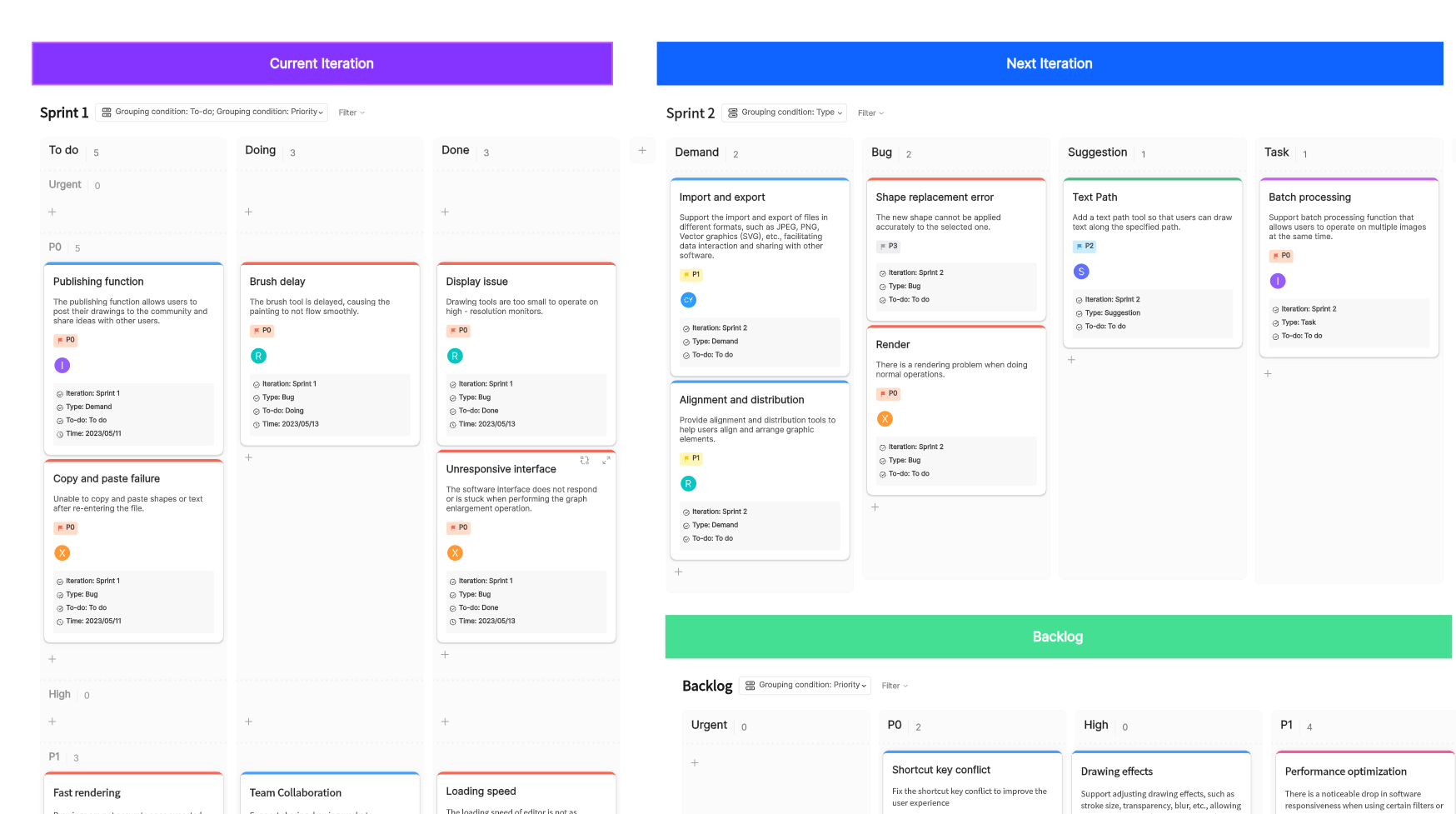
1. Understand Your Current Process:
Start by mapping out your existing workflow. Identify the key stages and steps involved in your process, from the initiation of a task to its completion. This understanding serves as a foundation for designing your Kanban board.
2. Define Workflow Stages:
Break down your process into distinct stages. Common stages include "To Do," "In Progress," and "Done." Customize these stages to match the unique workflow of your team or project.
3. Identify Work Item Types:
Determine the different types of work items your team handles. These could include tasks, user stories, bugs, or any other relevant units of work. Tailor your Kanban board to accommodate these item types.
4. Create a Kanban Board:
Use a physical board or a digital tool to create your Kanban board. Divide it into columns representing each workflow stage. Ensure that the board is easily accessible to all team members.
5. Visualize Work:
Populate your Kanban board with tasks or work items. Each item is represented by a card containing essential information. This visual representation helps team members quickly grasp the current status of work.
6. Limit Work in Progress (WIP):
Establish WIP limits for each workflow stage. WIP limits prevent overloading team members and encourage a steady flow of work. Determine these limits based on your team's capacity and the nature of the work.
7. Make Policies Explicit:
Clearly define the policies and criteria for moving tasks from one stage to the next. Document these policies on the Kanban board or in a separate document accessible to all team members. This transparency reduces ambiguity and streamlines decision-making.
8. Implement Daily Stand-ups:
Conduct regular stand-up meetings to review the status of work on the Kanban board. Discuss any impediments or challenges and make adjustments to the board as needed. These brief, daily check-ins keep the team aligned and responsive.
9. Monitor and Measure:
Track key metrics such as cycle time, lead time, and throughput. Use this data to identify areas for improvement and to assess the overall efficiency of your Kanban flow. Many digital Kanban tools provide built-in analytics for this purpose.
10. Continuous Improvement:
Foster a culture of continuous improvement. Regularly review your Kanban process and seek feedback from the team. Look for opportunities to optimize workflow, address bottlenecks, and refine policies to enhance efficiency.
11. Encourage Collaboration:
Promote open communication and collaboration among team members. Encourage them to share insights, concerns, and ideas for improvement. Collaboration is crucial for maintaining a smooth and efficient Kanban flow.
12. Adapt to Change:
Be prepared to adapt your Kanban process as your team and project evolve. Kanban is flexible, and its strength lies in its ability to accommodate changes quickly.
By following these steps and consistently refining your Kanban flow based on feedback and performance metrics, you can create an efficient and responsive system that helps your team deliver high-quality work with greater agility.
Part 5. Create an Efficient Kanban Flow Easily with Boardmix
Boardmix is a cutting-edge online whiteboard tool designed to revolutionize the way you collaborate and brainstorm. With its extensive range of drawing templates, Boardmix makes it easy to visualize complex ideas and create an efficient Kanban flow. Whether you're mapping out project timelines, designing workflows, or organizing tasks, Boardmix's intuitive interface and powerful features help streamline the process. Unlike traditional whiteboards, Boardmix allows for real-time collaboration across teams, making it an ideal solution for remote work environments.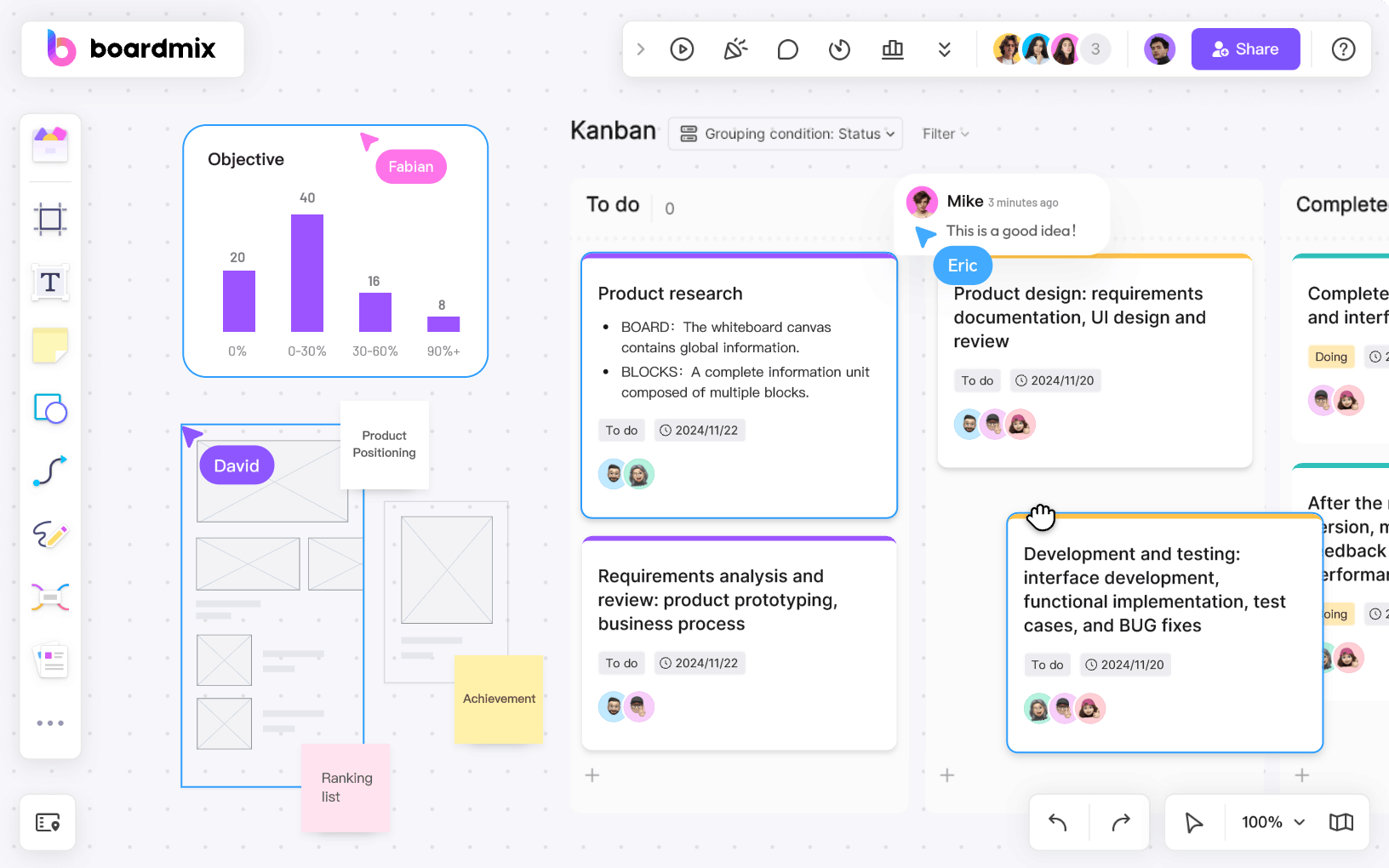
Key Features of Boardmix Kanban:
Real-Time Collaboration: Boardmix's Kanban board allows multiple users to work together in real-time, enabling seamless brainstorming and decision-making.
Extensive Drawing Templates: With a wide variety of templates, Boardmix makes it easy to visualize workflows and processes on the Kanban board.
Drag-and-Drop Functionality: Easily organize tasks by dragging and dropping them across different stages of the Kanban board in Boardmix.
Interactive Sticky Notes: Add, edit, or move sticky notes on your Boardmix Kanban board for efficient task management and tracking.
Customizable Columns: Tailor your workflow by customizing columns on the Boardmix Kanban board according to your project needs.
Task Details: Each task card on the Boardmix Kanban board can hold detailed information like descriptions, checklists, due dates, assignees, and more.
How to Create an Efficient Kanban Flow with Boardmix:
Step1. Start a New Board
Log into your Boardmix account and start a new board. Choose the Kanban template from our extensive collection of drawing templates.
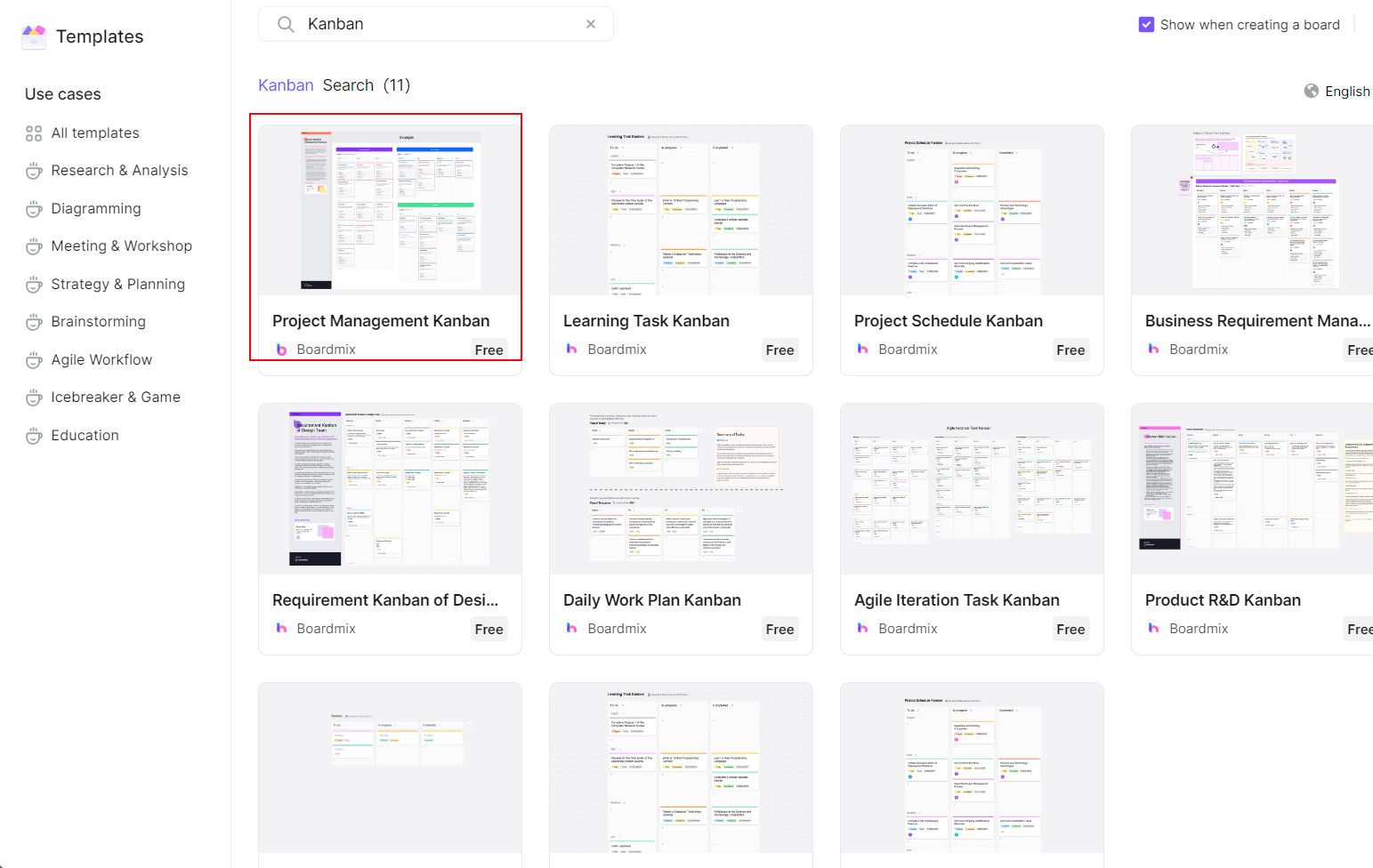
Step 2. Customize Your Columns
Tailor your workflow by customizing the columns on your Kanban board according to your project needs. Typical stages include "To Do", "In Progress", and "Done".

Step 3. Add Tasks
Use the interactive sticky notes feature to add tasks to your board. Each task can hold detailed information like descriptions, checklists, due dates, assignees, and more.

Step 4. Organize Tasks
Utilize the drag-and-drop functionality to organize tasks across different stages of the workflow as they progress.
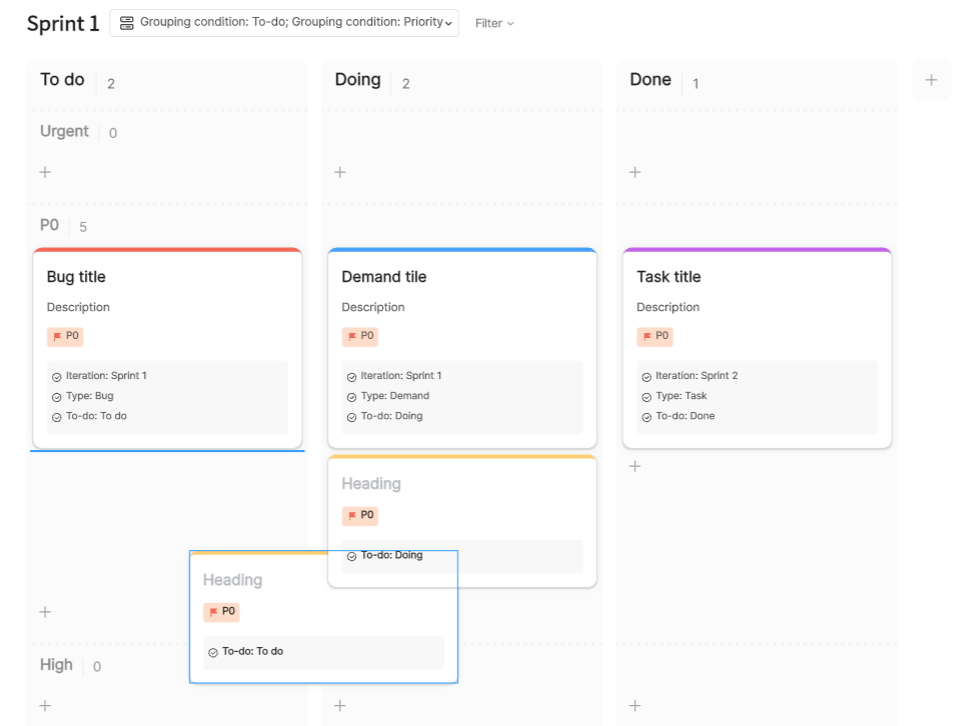
Step 5. Collaborate in Real-Time
Invite team members to join the board and collaborate in real-time. Team members can add, edit or move tasks as needed.

Step 6. Monitor Progress
Regularly review the board to monitor progress and identify any bottlenecks in the workflow.
Conclusion
Kanban flow represents a shift in the way teams approach project management, emphasizing adaptability, collaboration, and continuous improvement. By visualizing work, limiting WIP, and managing flow, teams can achieve a more efficient and responsive workflow. As organizations across various industries continue to adopt agile methodologies, Kanban stands out as a valuable approach for those seeking a balance between structure and flexibility in their project management practices.
With features like real-time collaboration, extensive drawing templates, and customizable columns, Boardmix is designed to streamline your workflow and enhance team productivity. Don't just take our word for it - try Boardmix today and revolutionize the way you manage tasks and projects.








